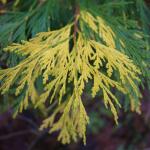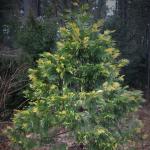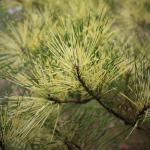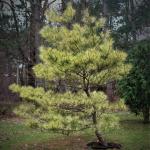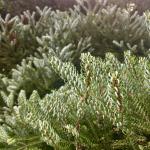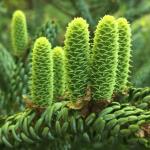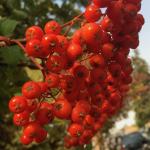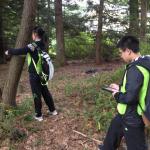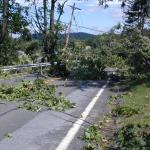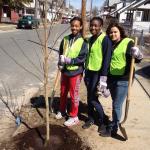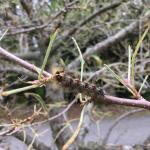A monthly e-newsletter from UMass Extension for landscapers, arborists, and other Green Industry professionals, including monthly tips for home gardeners.
To read individual sections of the message, click on the section headings below to expand the content.
To print this issue, either press CTRL/CMD + P or right click on the page and choose Print from the pop-up menu.
Free Invasive Insect Webinars in January and February
On January 25 and February 8 and 22, 2023 UMass Extension’s Landscape, Nursery, and Urban Forestry Program and UMass Extension’s Fruit Program presents a series of FREE webinars focusing on the impact, monitoring, and management of invasive insects in Massachusetts and the nation! Note: Much of the material presented in these webinars is specific to Massachusetts and New England.
Topics include:
- Forest Pest Risk is Heating Up with Climate Change
- Spotted Lanternfly Updates for Massachusetts from MDAR
- Spotted Lanternfly Management in the Landscape
- Entomopathogens of Spotted Lanternfly, Biopesticides, & Scouting Egg Masses in Vineyards
- Beech Leaf Disease: and the Newly Described Nematode That Causes It
- Invasive Forest Insects in Massachusetts
For the entire 2023 Invasive Insect Webinars schedule and registration links, as well as to view recordings of past invasive insect topics, go to https://ag.umass.edu/landscape/education-events/invasive-insect-webinars.
Invasive Plant Certification Program Wrapping Up in 2023
2023 will be the final year we offer this certificate program. Those who have taken some of the classes in this series in the past and still wish to earn the certificate of completion are advised to finish up any remaining classes in 2023.
While turf and landscape professionals might be very proficient in the development of a weed management program for turf and/or landscape, invasive plant management often reveals many new and unique challenges to these professionals. This 4-day program is intended to help participants meet these challenges when attempting to develop an invasive plant management program as part of their business. A certificate in Invasive Plant Management may be obtained by attending all four sessions and obtaining a passing grade on each.
The four sessions are:
- Principles and Fundamentals of Weed Science (A1) - March 23, 2023
- State Regulations Pertaining to Invasive Plant Management (A2) - March 16, 2023
- The Invasive Plant Issue and Invasive Plant Identification (A3) - April 6, 2023
- Developing an Invasive Plant Management Program (B) - April 13, 2023
For more details, go to https://ag.umass.edu/landscape/education/invasive-plant-certification-program
To register, go to our Events calendar at https://ag.umass.edu/landscape/upcoming-events
Partial reimbursement for the cost of classes in the Invasive Plant Certification Program is available in 2023 for eligible Massachusetts employers thru the Workforce Training Fund Program's Express Program: https://commcorp.org/subprogram/wtfp-express-program.
Featured Plant
Colorful Conifers
The deep green, elegant form of evergreens after a winter snow is one of the most beautiful elements of the New England landscape. A contrasting burst of color or unique form deepens the beauty and makes for a more interesting view to get us through the winter. That burst of color can come in the form of winter twigs like those of red-twigged dogwood or the various colors of winterberry or the beautiful bark of paperbark maple or seven son flower, or it can come from the interesting variations in evergreens themselves. Below are a few examples of cultivated varieties of conifers that add a note of grace to the winter garden through distinctive color, form, or a combination of the two. Many of these are dwarf or slow growing forms which lend themselves to use in modern gardens.
Incense cedar (Calocedrus decurrens) is a western North American native conifer which occurs from western Oregon to Nevada and south to California. The species is known for its deep green, scale-like leaves on flattened branches borne on a columnar tree which grows to 100’ tall or more in its native habitat. It was once an important source of timber, valued for its resistance to decay, and used in making pencils and cedar chests. It is heat and drought tolerant, as well as hardy to USDA hardiness zone 5, so a suitable option for our changing climate. Though uncommon in eastern gardens it is worthy of a place where it has room to grow in full sun or partial shade. Variegated cultivars like ‘Aureovariegata’ (seen below), or ‘Berrima’s Gold’ with its yellow foliage with an orange cast in winter, or ‘Maupin Glow’ with yellow-tipped branches provide a welcome splash of color (in moderation) in the winter landscape.
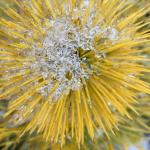 Another conifer with brilliant winter color is Moser’s Scots pine (Pinus sylvestris ‘Moseri’). Interestingly, this cultivar is completely green in summer and forms a dwarf, cone-shaped 4-5’ tall and 3’ wide specimen. Come winter, the stiff needles – a combination of short newer needles, and longer, older ones - turn a brazen gold, making a very eye-catching winter display. This is an old cultivar, discovered as a seedling in 1900 in the Moser Nursery in France. A very hardy species which is happy in USDA hardiness zone 3.
Another conifer with brilliant winter color is Moser’s Scots pine (Pinus sylvestris ‘Moseri’). Interestingly, this cultivar is completely green in summer and forms a dwarf, cone-shaped 4-5’ tall and 3’ wide specimen. Come winter, the stiff needles – a combination of short newer needles, and longer, older ones - turn a brazen gold, making a very eye-catching winter display. This is an old cultivar, discovered as a seedling in 1900 in the Moser Nursery in France. A very hardy species which is happy in USDA hardiness zone 3.
Dragon’s eye pine (Pinus densiflora ‘Oculus Draconis’) is another glowing beauty calling attention through every season and especially luminous against a dark background. Close inspection of this two-needled pine reveals alternating bands of yellow and green on each 3 ½" to 3 ¾” long needle. This cultivar will generally reach 15-25’ tall. Considered cold hardy to USDA hardiness zone 5, it benefits from protection from extreme sun and wind in winter which can cause the yellow portions of the needles to scorch. The species is native to China, Korea and Japan where its durable wood is important for buildings and other structures.
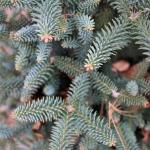 Horstmann’s Spanish fir or soap pine (Abies pinsapo ‘Horstmann’) brings a cool blue hue to the garden year-round. Short, stiff blue-needles are arranged radially along the stems, giving a tight appearance to the plant. The species hails from southern Spain and northern Morocco where it typically grows 60-100’ tall. It is hardy in USDA hardiness zone 6 and prefers full sun and well-drained soil. Among the notable cultivars is ‘Horstmann’ – a true dwarf which forms a mound reaching 3-4’ tall in 10 years which was found in the Horstmann Nursery in Germany in the 1970’s. ‘Glauca’ (from which ‘Horstmann’ is a sport) is also cool, icy blue but taller growing – slowly reaching as much as 60’ at maturity. The name soap pine stems from its use in soap making in its native range – twigs are crushed in water yielding a soapy solution.
Horstmann’s Spanish fir or soap pine (Abies pinsapo ‘Horstmann’) brings a cool blue hue to the garden year-round. Short, stiff blue-needles are arranged radially along the stems, giving a tight appearance to the plant. The species hails from southern Spain and northern Morocco where it typically grows 60-100’ tall. It is hardy in USDA hardiness zone 6 and prefers full sun and well-drained soil. Among the notable cultivars is ‘Horstmann’ – a true dwarf which forms a mound reaching 3-4’ tall in 10 years which was found in the Horstmann Nursery in Germany in the 1970’s. ‘Glauca’ (from which ‘Horstmann’ is a sport) is also cool, icy blue but taller growing – slowly reaching as much as 60’ at maturity. The name soap pine stems from its use in soap making in its native range – twigs are crushed in water yielding a soapy solution.
Horstmann’s silver curls Korean fir (Abies koreana ‘Horstmann’s Silberlocke’) is another outstanding cultivar introduced by the Horstmann Nursery in Germany in 1979. This slow growing beauty puts on about 6” of growth a year and will eventually form a small tree to 30’ tall. It is beautiful in every season but especially in winter when there are fewer spectacles to compete for our attention. Its chief beauty derives from the curled needles which clasp the stem, revealing the white undersides of each. This feature is especially pronounced at the tips of the upcurved branches and results in a beautiful, ghostly appearance. In spring, beautiful purple female cones are held upright on the branches, turning from gray-green to a beautiful deep purple in late spring and early summer. By mid-late summer, the cones turn light brown and begin to disintegrate, leaving the interior stem intact a bit longer. The ripe seeds are quickly eaten by red and gray squirrels as well as chipmunks. This Korean native is hardy to USDA hardiness zone 5.
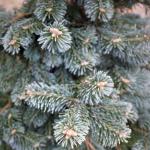 Martha’s Vinyard subalpine fir (Abies lasiocarpa ‘Martha’s Vineyard’) also brings a soft blue hue to the winter scene. It was selected and named at the famed Polly Hill Arboretum in West Tisbury, Massachusetts. This beautiful dwarf subalpine fir will grow quite slowly, gaining a mere 1-4” of growth a year and forming a 3-4’ conical shape in 10 years. Its tightly packed branches are cloaked in long, blue-gray needles, the blue especially notable on new growth. The species naturally occurs in western North America from western Canada to Washington, Oregon, east to Montana, Wyoming, Utah, and Colorado and south to the higher elevations in Arizona, northeast Nevada, and New Mexico. The species usually matures at about 60’ but is known to grow to 160’ where conditions are favorable. It is hardy to USDA hardiness zone 5.
Martha’s Vinyard subalpine fir (Abies lasiocarpa ‘Martha’s Vineyard’) also brings a soft blue hue to the winter scene. It was selected and named at the famed Polly Hill Arboretum in West Tisbury, Massachusetts. This beautiful dwarf subalpine fir will grow quite slowly, gaining a mere 1-4” of growth a year and forming a 3-4’ conical shape in 10 years. Its tightly packed branches are cloaked in long, blue-gray needles, the blue especially notable on new growth. The species naturally occurs in western North America from western Canada to Washington, Oregon, east to Montana, Wyoming, Utah, and Colorado and south to the higher elevations in Arizona, northeast Nevada, and New Mexico. The species usually matures at about 60’ but is known to grow to 160’ where conditions are favorable. It is hardy to USDA hardiness zone 5.
Joann Vieira, Director of Horticulture, The Trustees of Reservations
Trouble Maker of the Month
Dutch Elm Disease
Dutch elm disease (DED) was first detected in Massachusetts in 1941 from an American elm (Ulmus americana) in Berkshire County. Over the past 82 years, countless elms have succumbed to the ravages of DED, although in recent years the number of dying trees has been far fewer. Lone sentinel elms are becoming increasingly rare as they slowly, but surely, become diseased and die.
This lethal vascular wilt is caused by the fungal pathogen Ophiostoma novo-ulmi and wild-type American elms rarely exhibit any natural resistance to the pathogen. Overland spread of DED from diseased to healthy elms is facilitated by the native elm bark beetle (Hylurgopinus rufipes) and the introduced (now naturalized) European elm bark beetle (Scolytus multistriatus). The disease also spreads from diseased to healthy trees through root grafts when elms are in close proximity to one another.
All North American elms are susceptible to DED to some degree. American elm, the most abundant elm species in New England, is highly susceptible while the two other native elms occasionally found in forest and landscape settings, rock elm (U. thomasii) and slippery elm (U. rubra), vary from susceptible to somewhat resistant. There have been great strides in producing DED-resistant American elm cultivars over many decades of dedicated research. Elms possess many of the qualities we seek in urban trees: fast growth rates, tolerance of poor and compacted soils, tolerant of pollution and storm water runoff, decay resistance, long lifespan and high aesthetic value. However, much work remains to reintegrate American elm into our urban and suburban forests.
This recently published article reviews the current state of Dutch elm disease and the use of American elm in our urban forests: A review of Dutch elm disease and new prospects for Ulmus americana in the urban environment. 2022. Christopher A. Copeland, Richard W. Harper, Nicholas J. Brazee and Forrest J. Bowlick. Arboricultural Journal, https://doi.org/10.1080/03071375.2022.2082177
Nicholas J. Brazee, UMass Extension Plant Pathologist
Q&A
Q. Is there a management guide or recommendations for managing the spotted lanternfly (Lycorma delicatula) in Massachusetts?
A. Yes! For individuals living and working in Worcester, Shrewsbury, Fitchburg, or Springfield, MA, UMass Extension, the UMass Stockbridge School of Agriculture, and the MA Department of Agricultural Resources have created this spotted lanternfly management fact sheet to assist in decision making about managing this insect. This fact sheet should help with management plans for the 2023 growing season on properties where populations of this insect have been detected through monitoring.
If you find spotted lanternfly in Massachusetts in towns or cities other than the four listed above, please report it immediately here: https://massnrc.org/pests/slfreport.aspx.
We do not recommend treating for spotted lanternfly preemptively. Management is not necessary unless a breeding population of these insects has been detected on a property. Monitoring is an essential first step in this process.
Q. Is winter moth still a problem? I am seeing male winter moths flying near holiday lights at night in Taunton, MA (on 11/25/22). What does this mean for my crabapple next spring?
A. Winter moth (Operophtera brumata) will likely always have at least a small population in Massachusetts, despite the successful implementation of classical biocontrol through the release of a parasitoid fly, Cyzenis albicans. It is still possible to see male winter moths (females are flightless) flying around lights at night from approximately Thanksgiving through January if temperatures are warm enough. Caterpillar populations in 2023 may be significant enough that apple and blueberry growers need to monitor this insect. This is because the damage caterpillars can cause to these crops is more significant, and the tolerance threshold for winter moth is much lower in these systems. As for crabapples and ornamental trees, management likely will not be necessary thanks to C. albicans – however, it can be useful to monitor ornamental and shade trees for winter moth activity in the spring, once host plant leaves have completely opened for the season. In managed landscapes, thanks to biological control, winter moth has been reduced below damaging levels.
Q. The needles of balsam fir, Fraser fir, white fir, Colorado spruce, white spruce, and other hosts are severely distorted and twisted. What happened?
A. This sounds like damage from the balsam twig aphid (Mindarus abietinus). This is a very early season pest, with aphid activity in April. Eggs overwinter in the cracks and crevices of host plant bark on the trunk and branches. Eggs are brown in color and covered in white waxy rod-like structures. Eggs hatch approximately in April and May and become nymphs that mature quickly into "stem mothers" which are wingless and can each produce 20-40 living young without laying eggs. These new young feed on buds and tender needles, making them an early-season pest and causing the most damage at that time. This generation will mature into a winged adult form capable of dispersing to other trees and mating. These aphids can feed, but in this later stage they are much less damaging to the plants than those born of the stem mothers. This generation will lay brown eggs and cover them with white, waxy material onto the bark cracks and crevices which then overwinter for the next season. Several generations can occur per year. While it is too late to manage for this insect at this time of year, if balsam twig aphid was a problem in 2022, susceptible hosts should be monitored again in early April of 2023. Start monitoring on trees likely to break bud the soonest.
*Note: Studies have shown that damage from the balsam twig aphid did not affect Christmas tree customers at cut-your-own farms or wholesale buyers until at least 30% of the shoots had been damaged by this insect. (From: Third Edition Christmas Tree Pest Manual, USDA Forest Service)
Tawny Simisky, UMass Extension Entomologist
Garden Clippings Tips of the Month
December and January are the months to . . . .
-
Assess your yard for areas that need winter interest. Plants with evergreen foliage, berries, or interesting bark are great ways to add to the winter landscape. Exfoliating bark such as that of Acer griseum (paperbark maple) and Betula nigra (river birch) provides rich tones in the landscape. Hamamelis spp. (witchhazel) provides late winter or early spring interest with interesting crinkled flowers.
-
Be mindful during snow removal. Take care when piling snow to not injure plants by pushing snow onto or piling it up on branches. Also keep an eye on where salt laden runoff moves. Salt can remain in the soil until spring and impact plants after winter is over. Use markers to outline beds along driveways to avoid accidental damage from plows or shovels. Do not try to remove ice or shake snow from plants as branches are brittle and may break easily. Gently remove heavy snow to avoid breaking branches, but light snow can remain on plants.
-
Protect the bark of young trees. Rodent chewing can be problematic in winter. Voles and rabbits chew on thin barked trees and shrubs during winter. Damage can often be observed at the snow line. Trunks can be protected by making cages with hardware cloth or chicken wire. Keep in mind that the openings should be small to exclude voles.
-
Prepare your seed order. Winter is a great time to start preparing for the upcoming gardening season. Place you seed order now while the selection is still good.
-
Take care of houseplants. Reduce watering and hold off on fertilizing. Pay attention to light levels, providing supplemental light if necessary. Avoid temperature extremes, keeping plants away from heaters or areas of drafts. Monitor for insects and disease. Increase humidity if possible.
-
Maintain garden tools. Sharpen and clean pruners, spades, and mower blades.
-
Care for indoor bulbs and stored bulbs and tubers. If you want to plant indoor bulbs or keep them for next season, let the leaves continue to grow and don’t trim back foliage until it has turned yellow. Keep an eye on stored bulbs and tubers. Check for signs of drying such as shriveling but also be sure that bulbs don’t have too much moisture which results in mold or rot. For dry bulbs, try spritzing with water and placing them into a plastic bag with dampened potting soil. If mold or rot is an issue, increase air circulation or place bulbs and tubers in a paper bag.
Mandy Bayer, Extension Assistant Professor of Landscape Horticulture
Student-Led Urban Tree Inventories in Massachusetts: Strengthening our Understanding, One Tree at a Time
Since 2016, the University of Massachusetts (UMass) Urban Forestry Extension Program has been connecting urban forestry students with municipal forestry leaders from across Massachusetts to conduct small-scale, student-led urban forest inventories. The purpose of this initiative is to both generate connections for students among a network of professionals by linking them with a partnering municipality, and to foster the development of technical problem-solving skills as a result of enabling students to experience the social, economic, and political challenges that professional urban foresters encounter in their day-to-day duties.
An urban tree inventory is described as the documentation of the characteristics (e.g. location and attributes) of individual trees within a defined geographic area. Urban tree inventories may fall into several classifications, including:
- A sample tree inventory – a small % (usually only 3-10%) of the street section, blocksides, specified mileage, or area that provides an accurate estimate (+/- 10%) of the total street tree population.
- A partial tree inventory – a collection of urban tree data from a select neighborhood of the community or by tree attribute (e.g. historic trees).
- A complete tree inventory – all trees within the urban forest or defined geographic limits.
The information typically documented in a student-led inventory may be much like that of a small-scale inventory conducted by a professional: it may include general location information of the inventory, like neighborhood, ward or borough, as well as more detailed location information like a house address and GIS coordinates of individual trees. Standard information pertaining to the trees themselves recorded in an inventory include the identification of the tree, typically to species (Figure 1), and tree diameter (DBH) (Figure 2).
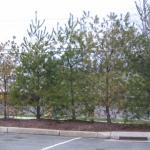 Additional details recorded by students may include tree height and crown spread, tree condition (good, fair, poor, dead) (Figure 3), as well as a tree risk rating on select sample trees. Maintenance recommendations like the suggestion to prune or even to remove a tree may also be made. Students routinely employ photographs to capture specimen trees, document pest situations, and record other items of interest to help further contextualize the state of a community’s urban forest. They may also include maps to help interested parties like community residents, as well as the urban forest manager/tree warden, visualize the areas of the municipality that have been inventoried.
Additional details recorded by students may include tree height and crown spread, tree condition (good, fair, poor, dead) (Figure 3), as well as a tree risk rating on select sample trees. Maintenance recommendations like the suggestion to prune or even to remove a tree may also be made. Students routinely employ photographs to capture specimen trees, document pest situations, and record other items of interest to help further contextualize the state of a community’s urban forest. They may also include maps to help interested parties like community residents, as well as the urban forest manager/tree warden, visualize the areas of the municipality that have been inventoried.
Tree inventories serve a variety of purposes: they help provide essential information for community leaders and decision-makers, they may provide the basis for discussion between urban foresters/tree wardens and important stakeholders, and they may provide guidance for maintenance personnel and volunteers. Ideally compiled in cooperation with a host-community, UMass student-led tree inventories include a report consisting of charts, tables, and lists that summarize the tree inventory data, as well as a sample management plan that may detail select goals, objectives, budgets, and strategies.
There are many widely-recognized benefits associated with an urban tree inventory including the potential to streamline and increase efficiency in relation to urban forest maintenance. Urban tree inventories may also inform and improve emergency preparedness (Figure 4), communication and community relations, and may help to justify urban forestry-related budgetary requests. Community-wide tree planting plans (Figure 5), pest detection and response (Figure 6), and knowledge about the environmental benefits of urban trees may also be informed by an urban tree inventory.
As we all know, inventories have their limitations, and these student-led initiatives are no exception. Inventories provide a mere snapshot in time of the actual state of a municipality’s urban forest; thus, an inventory is ideally used as a continuous management tool that is regularly updated and maintained. And, as with all reports, steps must be also taken to ensure the quality and integrity of the information that is being gathered in relation to urban trees. Perhaps the most compelling reason behind the execution of an urban forest inventory is its potential to shift the narrative, when it comes to the management of our urban trees:
“…it gives the manager a chance to change the operation from a predominantly reactive position – always putting out a fire – to a proactive position, where a significant portion of daily work occurs within the framework of information, planning, and policy.” (Bond 2013, p.8)
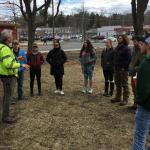 Urban foresters (known as tree wardens in Massachusetts and other New England states) (Figure 7) have welcomed the cooperation from students conducting these student-led urban tree inventories:
Urban foresters (known as tree wardens in Massachusetts and other New England states) (Figure 7) have welcomed the cooperation from students conducting these student-led urban tree inventories:
“I thoroughly enjoyed the opportunity to work with an urban forestry student from UMass and share information about Northampton's urban forestry initiative. I look forward to using the data from the final report to update our existing urban forestry inventory. Collaborating with the University and other students in this way is vital to the continued efforts to educate the public on the importance of community-wide urban forestry and its future.” – Richard Parasiliti, Superintendent of Forestry, Parks & Cemeteries/Tree Warden, Northampton, MA
“Working with urban forestry students from UMass has helped to keep our street tree inventory growing, and expanding to other town properties such as schools, cemeteries and libraries. Giving students access to Amherst’s living classroom benefits the Town and hopefully inspires future Urban Foresters.” – Alan Snow, Director of the Division of Trees & Grounds/Tree Warden, Amherst, MA
“I’ve enjoyed the opportunity helping UMass students with their urban forestry project. They ask a lot of great questions and have been really engaged with the project. I also look forward to reviewing the inventory data they collect and the final reports that they generate.” – David Lefcourt, City Arborist/Tree Warden, City of Cambridge, MA
“I value the opportunity to work with UMass urban forestry students. I feel the urban tree-related information that they find will be an asset to the Town of Ware in helping us move forward with our urban tree program.” – Josh Kunierez, Park Foreman/Tree Warden, Town of Ware, MA
Students themselves have indicated that conducting these urban tree inventory exercises is a meaningful experience, providing them with the opportunity to learn hands-on:
“This application of my studies allowed me to gain valuable experience in the field and foster an excellent connection to my local Tree Warden. I gained not only a deeper understanding of the trees in my area, but a more substantial appreciation.” – E.S., UMass Urban Forestry student
“I really enjoyed the experience of being on the street in the urban forest, the chance to get a feel for the work that is done in an urban forest, walking tree to tree collecting data, and learning how a well-managed inventory can be a huge asset to a community. The opportunity to work closely with a MA municipal tree warden and having a platform to provide some suggestions into a small portion of their urban forest was a highlight of my undergraduate degree. Hearing the challenges that a municipal forester navigates regularly was on the job training that is hard to find.” – A.J.E., UMass Urban Forestry student
“With all of the distractions, noise, pace of life, and artificial structures at the forefront of my urban environment, it is very easy for street trees to sort of disappear into the background. The tree inventory, in contrast, shines a light on these amazing resources. When the public engaged me while I was evaluating them and giving them the attention they deserve, it always lead into positive, fruitful conversations.” – I.B., UMass Urban Forestry student
"The community forestry inventory was a unique project. Our instructors gave us the opportunity to collect our own field data, and the freedom to interpret that data through the prism of the lessons and material covered in class, while encouraging us to utilize our own, personalized research methodology. It was truly an immersive, hands-on experience in urban forestry." – A.H., UMass Urban Forestry student
“As a longtime advocate of experiential learning, I think there’s no better way to make discoveries than to get your hands dirty. This inventory project was the opportunity to apply some knowledge while hopefully assisting a local community in reaping the many benefits their trees provide.” – W.B., UMass Urban Forestry student
It is generally agreed that the origins of the definition of contemporary urban forestry date to the 1960s when Professor Erik Jorgensen, from the Faculty of Forestry at the University of Toronto, developed a new course titled “urban forestry” (Kennedy 2010, p.4). The urban forest itself is a complex intersection of biological and physical factors that interact with social interests that include municipal decision-makers, employees, and of course, urban residents. According to Nowak and Greenfield (2018), the urban forest may be succinctly defined as “all trees within urban areas” (p.164). However we define it, it is widely understood that the foundation of sound urban forest management is the successful execution of an urban tree inventory. In Massachusetts, initiatives such as the student-led urban forest inventory are one important step towards this objective.
Richard W. Harper, Ph.D., Extension Associate Professor of Urban & Community Forestry, Department of Environmental Conservation, UMass Amherst
Kristina Bezanson, BCMA, Lecturer of Arboriculture & Urban Forestry, Department of Environmental Conservation, UMass Amherst
David Bloniarz, Ph.D., USDA Forest Service Northern Research Station Research Scientist, Adjunct Associate Professor, Department of Environmental Conservation, UMass Amherst
The authors co-teach the UMass spring semester ‘Community Forestry’ class for professionals and other off-campus students. For more information about enrolling, email: rharper@eco.umass.edu
Sources:
Bond, J. 2013. Tree Inventories (2nd Ed.). Best Management Practices – International Society of Arboriculture-Tree Care Industry Association.
Nowak, D.J. and E.J. Greenfield. 2018. U.S. urban forest statistics, values, projections. Journal of Forestry 116 (2): 164-177.
Kennedy, A. 2010. Urban Forests. Forest History Society of Ontario 1(2): 1-30. Accessed online: http://www.ontarioforesthistory.ca/files/fhso_newsl_vol_1_iss_2_2010.pdf
Upcoming Events
For details and registration options for these upcoming events, go to the UMass Extension Landscape, Nursery, and Urban Forestry Program Upcoming Events Page.
- 1/25/23 - Invasive Insect Webinar Series: Day 1
- 2/8/23 - Invasive Insect Webinar Series: Day 2
- 2/22/23 - Invasive Insect Webinar Series: Day 3
- 2/28/23 - SAVE THE DATE: virtual Community Tree Conference
- 3/16/23 - State Regulations Pertaining to Invasive Plant Management (A2 of the Invasive Plant Certification Program)
- 3/23/23 - Principles and Fundamentals of Weed Science (A1 of the Invasive Plant Certification Program)
- 3/29/23 - SAVE THE DATE: virtual Spring Kick-off - Landscape Topics
- 3/30/23 - SAVE THE DATE: virtual Spring Kick-off - TurfTopics
- 4/6/23 - The Invasive Plant Issue and Invasive Plant Identification (A3 of the Invasive Plant Certification Program)
- 4/13/23 - Developing an Invasive Plant Management Program (B of the Invasive Plant Certification Program)
Pesticide Exam Preparation and Recertification Courses
These workshops are currently being offered online. Contact Natalia Clifton at nclifton@umass.edu or go to https://www.umass.edu/pested for more info.
InsectXaminer!
Episodes so far featuring gypsy moth, lily leaf beetle, euonymus caterpillar, imported willow leaf beetle, and spotted lanternfly can be found at: https://ag.umass.edu/landscape/education-events/insectxaminer
TickTalk with TickReport Webinars
To view recordings of past webinars in this series, go to: https://ag.umass.edu/landscape/education-events/ticktalk-with-tickreport-webinars
Additional Resources
For detailed reports on growing conditions and pest activity – Check out the Landscape Message
For professional turf managers - Check out our Turf Management Updates
For commercial growers of greenhouse crops and flowers - Check out the New England Greenhouse Update website
For home gardeners and garden retailers - Check out our home lawn and garden resources
Diagnostic Services
Landscape and Turf Problem Diagnostics - The UMass Plant Diagnostic Lab is accepting plant disease, insect pest and invasive plant/weed samples. By mail is preferred, but clients who would like to hand-deliver samples may do so by leaving them in the bin marked "Diagnostic Lab Samples" near the back door of French Hall. The lab serves commercial landscape contractors, turf managers, arborists, nurseries and other green industry professionals. It provides woody plant and turf disease analysis, woody plant and turf insect identification, turfgrass identification, weed identification, and offers a report of pest management strategies that are research based, economically sound and environmentally appropriate for the situation. Accurate diagnosis for a turf or landscape problem can often eliminate or reduce the need for pesticide use. See our website for instructions on sample submission and for a sample submission form at http://ag.umass.edu/diagnostics.
Soil and Plant Nutrient Testing - The lab is accepting orders for Routine Soil Analysis (including optional Organic Matter, Soluble Salts, and Nitrate testing), Particle Size Analysis, Pre-Sidedress Nitrate (PSNT), and Soilless Media (no other types of soil analyses available at this time). Testing services are available to all. The lab provides test results and recommendations that lead to the wise and economical use of soils and soil amendments. For updates and order forms, visit the UMass Soil and Plant Nutrient Testing Laboratory web site.
Tick Testing - The UMass Center for Agriculture, Food, and the Environment provides a list of potential tick identification and testing options at: https://ag.umass.edu/resources/tick-testing-resources.
